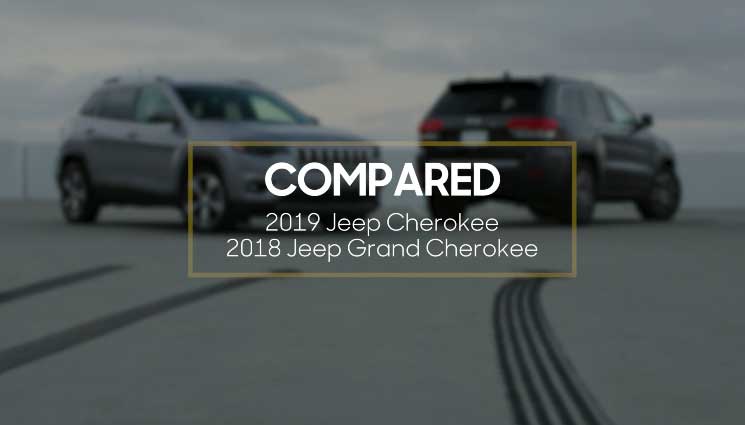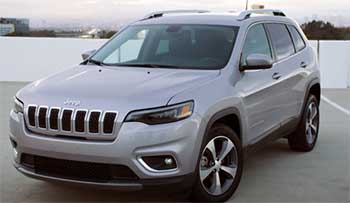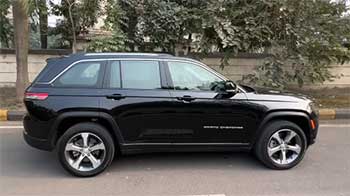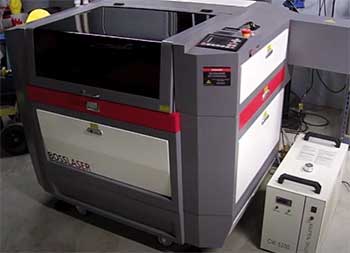I’ve always been fascinated by Jeep’s rugged charm and off-road legacy. When it came time to choose between the Jeep Cherokee and Jeep Grand Cherokee, I found myself torn between two iconic SUVs, each with its own personality and strengths.
This article is my journey to compare these vehicles, breaking down their pros, cons, and key features to help you decide which one fits your lifestyle. Whether you’re craving adventure or comfort, I’ll walk you through the details to make your choice easier.

Comparison Table: Jeep Cherokee vs. Jeep Grand Cherokee
| Feature | Jeep Cherokee | Jeep Grand Cherokee |
| Starting Price | ~$37,695 | ~$38,490 (Laredo 2-row) |
| Size | Midsize SUV (182 inches long) | Midsize SUV (193.5–204.9 inches) |
| Seating Capacity | 5 passengers | 5–7 passengers (Grand Cherokee L) |
| Base Engine | 2.4L 4-cylinder (180 hp) | 3.6L V6 (293 hp) |
| Hybrid Option | Not available | 4xe PHEV (375 hp, 56 MPGe) |
| Towing Capacity | Up to 4,000 lbs | Up to 6,200 lbs |
| Infotainment | 8.4-inch Uconnect touchscreen | 8.4–10.1-inch Uconnect 5 touchscreen |
| Off-Road Capability | Trailhawk trim, Active Drive Lock 4×4 | Trailhawk 4xe, Quadra-Lift air suspension |
| Fuel Economy (Base) | 22 MPG combined | 22 MPG combined (RWD/4WD) |
| Cargo Space | 25.8–54.7 cu. ft. | 37.7–70.8 cu. ft. (2-row), 17.2-84.6 cu. ft. (3-row) |
My Journey with Jeep: Setting the Stage
As a car enthusiast with a love for both city drives and off-road adventures, I’ve always admired Jeep’s ability to blend rugged capability with modern comfort. The Cherokee and Grand Cherokee are two of Jeep’s flagship SUVs, but they cater to slightly different audiences. The Cherokee, compact yet capable, feels like the scrappy underdog, while the Grand Cherokee exudes a more refined, commanding presence. To figure out which one suits you, I’ve spent time researching their features, driving dynamics, and real-world usability. Let’s break it down.
Jeep Cherokee: The Compact Contender
The Jeep Cherokee, particularly the 2023 model (the last of its fifth generation before its discontinuation), is a midsize SUV that’s nimble and versatile. It’s the kind of vehicle I’d pick for weaving through urban streets or tackling a weekend trail. Its compact size—182 inches long—makes it easier to park in tight city spots compared to its bigger sibling.

Key Features of the Jeep Cherokee
Engines and Performance: The base 2.4-liter four-cylinder engine produces 180 horsepower, which feels adequate for daily driving but lacks the punch of higher trims. The optional 2.0-liter turbo (270 hp) or 3.2-liter V6 (271 hp) offers more gusto, especially for highway passing or light towing (up to 4,000 pounds).
Off-Road Prowess: The Trailhawk trim, with its Active Drive Lock 4×4 system, skid plates, and all-terrain tires, is a standout for off-road enthusiasts like me who crave muddy trails or rocky paths.
Interior and Tech: The Cherokee’s cabin is functional, with an 8.4-inch Uconnect touchscreen that’s intuitive and supports wireless Apple CarPlay and Android Auto.1 The materials feel solid but not luxurious, which is fine for a practical SUV.
Cargo and Space: With 25.8 cubic feet behind the rear seats (expanding to 54.7 cubic feet with seats folded), it’s decent for groceries or camping gear but lags behind larger SUVs.
Pros of the Jeep Cherokee
- Maneuverability: Its compact size makes it a breeze to navigate in crowded parking lots or narrow trails.
- Off-Road Capability: The Trailhawk trim rivals the Wrangler in off-road performance, with a locking rear differential and impressive ground clearance.2
- Affordable Entry: Starting at around $37,695, it’s more budget-friendly than the Grand Cherokee.
- User-Friendly Tech: The Uconnect system is one of the best in the industry, with crisp graphics and quick responses.
Cons of the Jeep Cherokee
- Underpowered Base Engine: The 2.4-liter engine feels sluggish, especially when loaded with passengers or cargo.
- Limited Cargo Space: Compared to competitors like the Honda CR-V, the Cherokee’s trunk feels cramped.
- Discontinuation: Jeep axed the Cherokee in 2023, so you’re limited to used or leftover models until the 2026 revival.
- Basic Interior: The cabin, while functional, lacks the premium feel of higher-end rivals or the Grand Cherokee.
Jeep Grand Cherokee: The Premium Powerhouse
The Jeep Grand Cherokee, now in its fifth generation for 2025, is a step up in size, luxury, and capability. Driving one feels like commanding a ship—solid, confident, and ready for anything. It’s available in two-row (193.5 inches) and three-row Grand Cherokee L (204.9 inches) configurations, making it ideal for families or those needing extra space.

Key Features of the Jeep Grand Cherokee
Engines and Performance: The base 3.6-liter V6 (293 hp) is smooth and powerful, while the 4xe plug-in hybrid (375 hp, 470 lb-ft torque) offers 25 miles of electric range and 56 MPGe. A 5.7-liter V8 (357 hp) was previously available on higher trims for serious towing (up to 6,200 pounds), though it has been dropped for 2025.
Off-Road Mastery: The Trailhawk 4xe, with its Quadra-Lift air suspension and sway bar disconnect, tackles tough terrain with ease. I was impressed by its 10.9-inch ground clearance and best-in-class approach angle.
Interior and Tech: The Grand Cherokee’s cabin feels upscale, with available Capri leather, a 10.1-inch Uconnect 5 touchscreen, and a premium 19-speaker McIntosh audio system.3 The three-row L model seats up to seven.
Cargo and Space: The two-row model offers 37.7 cubic feet behind the rear seats (70.8 cubic feet folded), while the L model boasts 17.2 cubic feet behind the third row and up to 84.6 cubic feet with seats down, perfect for hauling gear.
Pros of the Jeep Grand Cherokee
- Luxurious Interior: The Summit and Overland trims rival luxury SUVs with premium materials and tech.
- Hybrid Efficiency: The 4xe’s 56 MPGe and electric range make it a standout for eco-conscious adventurers.
- Towing and Power: With up to 6,200 pounds of towing capacity, it’s a workhorse for trailers or boats.
- Versatile Configurations: Choose between two-row or three-row models to suit your needs.
Cons of the Jeep Grand Cherokee
- Higher Price: Starting at ~$38,490, it’s pricier than the Cherokee, with top trims like the Summit exceeding $60,000.4
- Fuel Economy: The base V6’s 22 MPG combined is less efficient than some rivals like the Honda Passport.
- Size Challenges: Its larger footprint can feel cumbersome in tight spaces or urban environments.
- Past Reliability Issues: Earlier models (e.g., 2014) had transmission and shifter problems, though recent years are more dependable.
Head-to-Head: How They Stack Up
Comparing these two Jeeps is like choosing between a trusty Swiss Army knife and a full-fledged toolbox. The Cherokee is compact, affordable, and scrappy, while the Grand Cherokee is powerful, luxurious, and spacious. Here’s how they differ across key areas.
Size and Practicality
The Cherokee’s 182-inch length makes it feel agile, whether I’m zipping through city traffic or squeezing into a trailhead parking spot. Its 5-passenger seating is fine for small families or solo adventurers, but the cargo space (25.8–54.7 cubic feet) feels limiting for big trips.
The Grand Cherokee, especially the L model, is a different beast. At up to 204.9 inches, it’s noticeably larger, which translates to more legroom and cargo capacity (up to 84.6 cubic feet in the L).5 If you’ve got a big family or haul a lot of gear, the Grand Cherokee’s extra space is a game-changer.
Performance and Powertrains
The Cherokee’s base engine is a weak point. The 2.4-liter four-cylinder struggles under load, and I found myself wishing for the turbo or V6 upgrade for better acceleration. Towing maxes out at 4,000 pounds, which is decent but not exceptional.
The Grand Cherokee’s 3.6-liter V6 feels effortless, whether merging onto highways or climbing steep grades. The 4xe hybrid is a revelation, blending 375 horsepower with eco-friendly efficiency. Its 6,200-pound towing capacity outshines the Cherokee, making it ideal for heavier loads.
Off-Road Capability
Both SUVs live up to Jeep’s off-road heritage, but they shine in different ways. The Cherokee Trailhawk’s Active Drive Lock system and 8.7-inch ground clearance make it a nimble trail warrior. I’ve taken it through muddy paths, and it handles like a champ.
The Grand Cherokee Trailhawk 4xe takes it up a notch with its Quadra-Lift air suspension, which adjusts for up to 10.9 inches of clearance. The sway bar disconnect and best-in-class approach angle let it conquer tougher terrain. If you’re serious about off-roading, the Grand Cherokee feels more unstoppable.
Technology and Comfort
The Cherokee’s cabin is practical but not plush. The 8.4-inch Uconnect system is a highlight, with crisp graphics and easy smartphone integration. However, the seats and materials feel more utilitarian than luxurious.
The Grand Cherokee’s interior is a step above, especially in higher trims. The available 10.1-inch Uconnect 5 touchscreen, heated/ventilated seats, and premium audio make it feel like a luxury SUV. The Signature Edition’s motorized side steps and rear-seat entertainment are perfect for families or long trips.
Price and Value
The Cherokee starts at around $37,695, making it the more affordable option. It’s a solid choice if you want Jeep’s off-road DNA without breaking the bank. However, its discontinuation means you’re hunting for used models or waiting for the 2026 revival.
The Grand Cherokee’s ~$38,490 starting price reflects its premium features, but fully loaded models can climb past $60,000.6 The 4xe hybrid adds value for eco-conscious buyers, but the higher trims are a stretch for budget shoppers.
Real-World Driving: My Experience
To get a feel for these SUVs, I took both for a spin. The Cherokee felt light and responsive in the city, zipping through traffic with ease. On a local trail, the Trailhawk’s all-terrain tires gripped confidently, though the base engine wheezed a bit on steep climbs.
The Grand Cherokee, on the other hand, felt like a luxury liner. Its V6 had plenty of power for highway cruising, and the 4xe’s electric mode was eerily quiet in stop-and-go traffic. Off-road, the Trailhawk 4xe glided over rocks and ruts, making me feel invincible. The only downside was its size—I had to be extra careful in tight parking lots.
Compare Related Vehicles: Infiniti Q40 vs. Infiniti Q50
The Cherokee’s Discontinuation and Future
Jeep discontinued the Cherokee in 2023 after a 49-year run, leaving a gap in their lineup.7 The decision was driven by declining sales and a shift toward electrified models like the Grand Cherokee 4xe. However, Jeep has teased a 2026 Cherokee revival, built on the STLA Large platform with hybrid and possibly electric options.8 Spy shots suggest a boxier design and a modern interior, which could make it a strong contender against rivals like the Toyota RAV4 or Honda CR-V.
Why “Grand” Cherokee?
The “Grand” in Grand Cherokee reflects its larger size, premium features, and enhanced capability compared to the Cherokee. Introduced in 1993, it was designed to compete with upscale SUVs while retaining Jeep’s off-road roots. The name signifies its status as the flagship, blending luxury with ruggedness.
Making Your Choice
Choosing between the Cherokee and Grand Cherokee depends on your needs. If you’re a city dweller or solo adventurer on a budget, the Cherokee’s compact size and off-road chops make it a great pick—though you’ll need to hunt for a used one until 2026. If you need space, power, or luxury, the Grand Cherokee’s versatility and premium features are hard to beat, especially with the 4xe hybrid.
Frequently Asked Questions (FAQ)
What is the difference between a Jeep Cherokee and a Grand Cherokee?
The Cherokee is a compact midsize SUV with a lower price and nimble handling, while the Grand Cherokee is larger, more luxurious, and offers a hybrid option, three-row seating, and higher towing capacity.
Why is Jeep discontinuing Cherokee?
Jeep discontinued the Cherokee in 2023 due to declining sales and a focus on electrified models like the Grand Cherokee 4xe.9 A new Cherokee is planned for 2026.
Why is Jeep dropping the Cherokee name?
Jeep isn’t dropping the Cherokee name entirely; it was paused in 2023 but is set to return in 2026 with a redesigned model on a new platform.10
Why is it called the Jeep Grand Cherokee?
The “Grand” reflects its larger size, premium features, and enhanced capability compared to the Cherokee, positioning it as Jeep’s flagship SUV since 1993.
Conclusion: Your Jeep, Your Journey
After diving into the Jeep Cherokee and Grand Cherokee, I’ve realized they’re both fantastic SUVs, each with a unique vibe. The Cherokee is your scrappy, budget-friendly trailblazer, perfect if you love agility and don’t need extra seats. The Grand Cherokee, with its power, luxury, and hybrid option, is ideal if you crave space and refinement.
Think about your lifestyle—city commutes, family road trips, or off-road adventures—and pick the Jeep that feels like home. You can’t go wrong with either, so test-drive them and see which one sparks joy for you.

